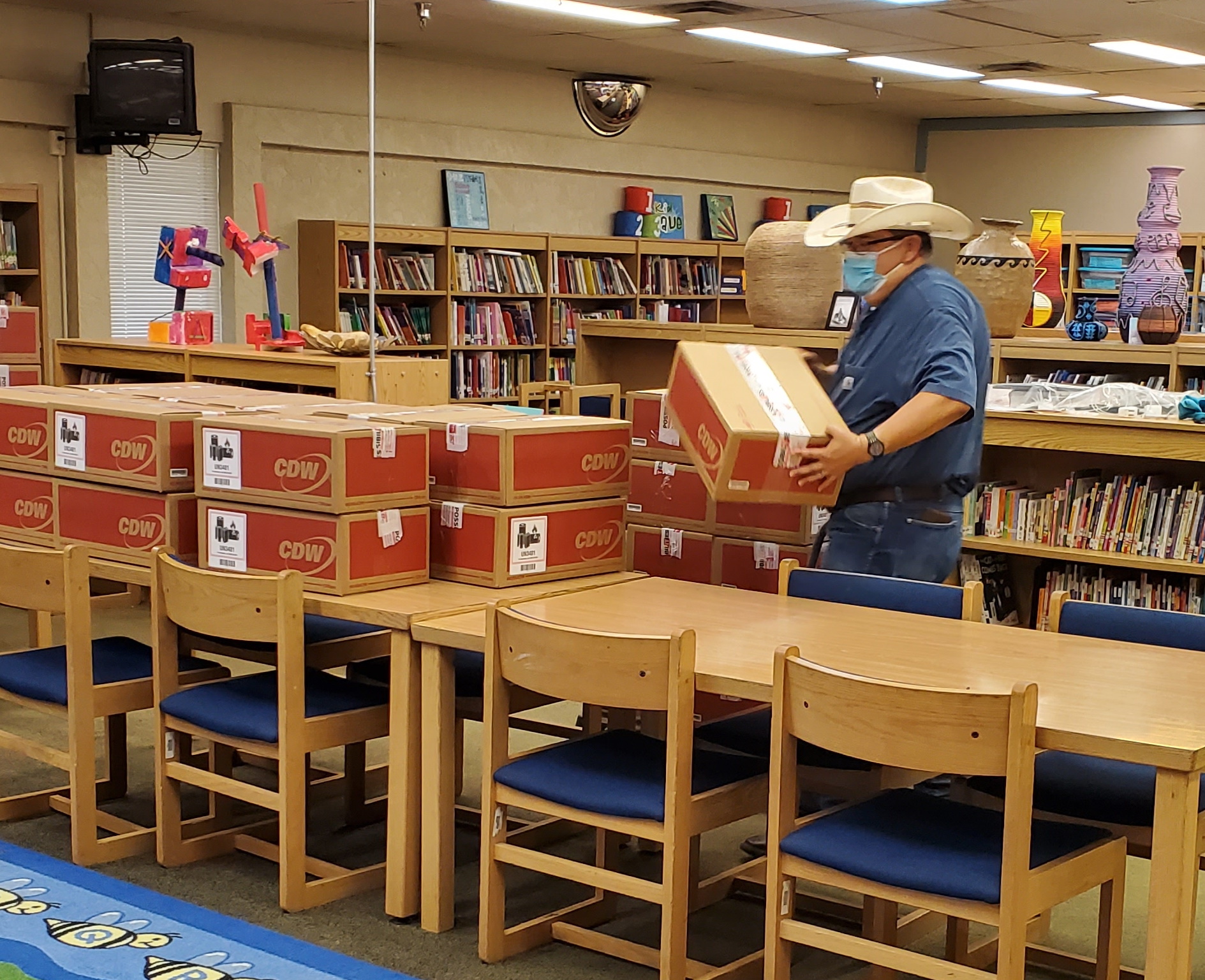How to Implement Long-Term Remote Learning in a Rural Area
With a high at-risk population, education leaders at Gila River Indian Community have implemented a long-term approach to remote learning education despite pandemic uncertainty

When the pandemic hit last February, the leaders at Casa Blanca Community School in the Gila River Indian Community in Arizona did what very few districts did: Adopt a long-term approach in the face of uncertainty.
Located about 30 minutes south of the Phoenix metropolitan area, Gila River Indian Community is a rural, agricultural community and home to the Keli Akimel O'odham or “River People,” also known as the Pima and the Maricopa or Piipaash. Many of the families in the community face significant socio-economic challenges, and students often live in multi-generational homes. And with Native American populations having some of the highest infection and mortality rates for COVID, it was critical to make an early commitment to sustained virtual learning.
“From the start, our school board, my staff, and I were able to sit down and have an honest discussion that said, ‘Look, this thing isn't going away,’” says Kim Franklin, principal of Casa Blanca Community School. “From the very beginning our board said we're going to be thinking of this in semester blocks, we're not going to be talking days or weeks, we're going to be looking at this long term. And so, what's that going to mean?”
Most families in the community did not have any internet connectivity at all, and if they did, it was only a cell phone. WiFi and computers were scarce. Getting virtual classes up and running was going to be a huge challenge.
“The first thing was connectivity,” says Franklin. “We made a blanket decision for equity sake. Every family was going to get a hotspot, and unlimited WiFi. That was No. 1.”
In addition to working with tribal governor Stephen Lewis and local businesses to improve connectivity, the district received CARES Act funding and a Creating Learning Connections grant, a result of an initiative from First Book, CDW-G, Intel Corporation, LEGO Education, and the LEGO Foundation.
Thanks to the funding, every student was provided with a hotspot and a device.
Tools and ideas to transform education. Sign up below.
“That changed everything,” says Franklin. “We rolled out a full curriculum, the actual one that they'd be getting if they were sitting here, with both synchronous and asynchronous learning. We take real attendance, and are engaging in different ways.”
Consistency is key
One of the primary focuses has been consistency within the program so that there would be true distance learning. “We didn't want to throw whatever against the wall and make it stick like it was last February, we wanted this to be real school,” says Franklin. “We made the commitment to provide the staff with the professional development to be able to actually teach what they normally would be teaching, but in a virtual environment.”
The entire education staff received PD for remote learning, including counselors, arts teachers, and even an agricultural teacher who teaches remote gardening classes. “If you've never seen kindergarteners with their little scoop and shovel and a little paper cup online with their teacher, it's just adorable,” says Franklin.
PD has also included basic tech support for all staff, including the school secretary. “We have a very large number of grandparents raising their grandchildren, people in their fifties, sixties, and seventies who've never touched a computer in their life,” says Franklin “At first we were walking them through the most basic things--they'd be on the phone and say the screen is black. ‘Well, did you turn on the computer?’ ‘Well how do I turn on the computer?’ ‘Push the button.’ ‘Okay, well now, now it's making a sound …’ And you’d have the grandkids saying to grandma, ‘It's the green button, push the green button!’”
To that extent, students have also had an opportunity to be the teachers and demonstrate their learning by having to explain technology to their grandparents.
Silver lining playbook
The silver lining of the pandemic, if there is one, has been providing a real opportunity for an education paradigm shift. Franklin acknowledges that many of the changes in the past year would not have happened any time soon--if at all--under normal circumstances, including increased parent engagement.
“We have always said, ‘Oh, if only parents knew what went on in our schools,’” says Franklin. “Well, our parents are sitting right next to those kids, and the conversations I'm having with parents about what they are seeing, what's going on with their child and their child's learning, have completely changed and it's amazing.”
Ultimately, Franklin credits the community’s success to the school board making the decision early and then going all-in on remote learning.
“I reflect every day on what this would have looked like if we were just trying to cobble this together,” Franklin says. “I like to think we would have survived but getting the funding was a real godsend. I just can't overemphasize that because it provided that one last step, especially for our special needs learners. Having that solid-state computer has made such a difference.”
Kim Franklin is participating in the upcoming T&L webinar “Ensuring Consistent Equitable Student Connectivity” on Dec. 9. Register for free here
If you would like to participate in the COVID Diary series, please complete this form. Email Ray.Bendici@futurenet.com with any questions.
Ray Bendici is the Managing Editor of Tech & Learning and Tech & Learning University. He is an award-winning journalist/editor, with more than 20 years of experience, including a specific focus on education.
